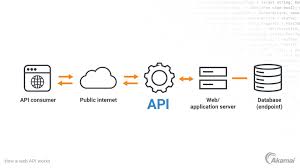Understanding Sustainable Development and the Role of SLCP Standards
Sustainable development has become a central theme in global discussions about the future of our planet. It embodies the principle of meeting the needs of the present without compromising the ability of future generations to meet their own needs. As environmental challenges such as climate change, resource depletion, and pollution become increasingly urgent, sustainable development offers a framework to balance economic growth, social equity, and environmental protection.
What is Sustainable Development?
Sustainable development is a holistic approach to progress that integrates three interconnected pillars:
- Environmental Protection: Preserving natural ecosystems, reducing pollution, conserving biodiversity, and managing resources responsibly.
- Economic Growth: Promoting economic activities that create jobs, increase wealth, and improve living standards without degrading natural systems.
- Social Equity: Ensuring fair access to resources and opportunities, reducing poverty, and improving health, education, and social inclusion.
Achieving sustainable development requires innovation, collaboration, and commitment across governments, businesses, and civil society. It calls for long-term thinking and systems-based solutions that consider environmental, social, and economic impacts together.
The Challenge of Climate Change and Pollution
One of the most pressing issues linked to sustainable development is climate change. Global warming is driven largely by greenhouse gas emissions, which trap heat in the atmosphere and disrupt weather patterns. In addition to carbon dioxide (CO₂), there are other climate pollutants that have shorter atmospheric lifetimes but exert strong warming effects. These are known as Short-Lived Climate Pollutants (SLCPs).
What are SLCPs?
SLCPs include substances such as:
- Methane (CH₄): A potent greenhouse gas emitted during fossil fuel extraction, agriculture (especially livestock), and waste management.
- Black Carbon (soot): Tiny particles produced by incomplete combustion of fossil fuels, biofuels, and biomass. Black carbon absorbs sunlight and warms the atmosphere, while also contributing to air pollution and health problems.
- Hydrofluorocarbons (HFCs): Man-made chemicals used mainly in refrigeration and air conditioning with high global warming potential.
- Tropospheric Ozone: A harmful air pollutant formed by chemical reactions involving other pollutants in the lower atmosphere.
Though SLCPs persist in the atmosphere for much shorter times than CO₂ (ranging from days to a decade), they have a much higher warming potential per unit mass, meaning reducing them can have rapid and significant climate benefits.
The SLCP Standard: What Is It?
Recognizing the importance of controlling SLCPs, several initiatives and standards have been developed to help industries and governments measure, report, and reduce their SLCP emissions effectively. The SLCP Standard is a framework designed to provide a consistent methodology for accounting and verifying SLCP reductions.
Key features of the SLCP Standard include:
- Robust Measurement Protocols: Ensures accurate and transparent accounting of SLCP emissions across various sectors.
- Verification and Certification: Provides third-party verification to guarantee credibility and reliability of emission reduction claims.
- Support for Mitigation Projects: Helps guide project developers and policymakers in designing effective reduction strategies for SLCPs.
- Alignment with Climate Goals: Facilitates integration with broader climate action frameworks, such as Nationally Determined Contributions (NDCs) under the Paris Agreement.
Why SLCP Reduction Matters for Sustainable Development
Reducing SLCPs aligns closely with sustainable development goals (SDGs). Here’s how:
- Climate Mitigation: Rapid reductions in SLCPs can slow the rate of global warming in the near term, providing more time to implement long-term CO₂ reductions.
- Improved Air Quality: Cutting black carbon and ozone precursors reduces air pollution, which benefits public health by lowering respiratory and cardiovascular diseases.
- Enhanced Food Security: Tropospheric ozone damages crops; reducing it helps increase agricultural productivity and resilience.
- Economic Benefits: SLCP mitigation projects often create jobs and foster innovation in clean technologies and sustainable practices.
How Businesses and Governments Can Engage
Incorporating SLCP standards into sustainability strategies allows organizations to demonstrate leadership in climate action and corporate responsibility. Businesses can:
- Identify and quantify their SLCP emissions using the standard.
- Develop targeted reduction projects, such as methane capture in waste facilities or cleaner cooking technologies.
- Collaborate with governments and international bodies to support national SLCP mitigation plans.
Governments can:
- Adopt SLCP measurement and reporting frameworks to track progress.
- Incentivize industries to reduce SLCPs through regulations, subsidies, or carbon markets.
- Raise public awareness on the health and climate benefits of SLCP reduction.
Conclusion
Sustainable development requires a comprehensive approach that tackles multiple environmental challenges simultaneously. Addressing Short-Lived Climate Pollutants through standardized methods like the SLCP Standard is a critical step in accelerating climate mitigation, improving air quality, and supporting global sustainability goals.
By integrating SLCP reduction into broader sustainable development efforts, we can achieve faster climate benefits, protect human health, and build a more resilient and equitable future for all.




